-
 Bitcoin
Bitcoin $83,291.0340
-0.96% -
 Ethereum
Ethereum $1,826.6379
-1.54% -
 Tether USDt
Tether USDt $0.9998
0.00% -
 XRP
XRP $2.0549
-1.26% -
 BNB
BNB $606.8753
1.28% -
 Solana
Solana $119.1310
-4.05% -
 USDC
USDC $1.0000
0.00% -
 Dogecoin
Dogecoin $0.1659
-1.56% -
 Cardano
Cardano $0.6500
-2.57% -
 TRON
TRON $0.2364
-0.34% -
 Toncoin
Toncoin $3.7730
-5.06% -
 UNUS SED LEO
UNUS SED LEO $9.4476
0.65% -
 Chainlink
Chainlink $13.0772
-2.81% -
 Stellar
Stellar $0.2627
-1.16% -
 Avalanche
Avalanche $18.6021
-1.63% -
 Sui
Sui $2.3506
0.90% -
 Shiba Inu
Shiba Inu $0.0...01230
1.04% -
 Hedera
Hedera $0.1637
0.05% -
 Litecoin
Litecoin $83.5759
2.10% -
 Polkadot
Polkadot $4.0229
-0.74% -
 MANTRA
MANTRA $6.3749
2.08% -
 Bitcoin Cash
Bitcoin Cash $303.6743
-0.24% -
 Bitget Token
Bitget Token $4.5449
-0.46% -
 Dai
Dai $1.0000
-0.01% -
 Ethena USDe
Ethena USDe $0.9997
-0.01% -
 Pi
Pi $0.6435
-7.05% -
 Hyperliquid
Hyperliquid $12.2904
-5.52% -
 Monero
Monero $214.8078
-0.76% -
 Uniswap
Uniswap $6.0066
-0.82% -
 Aptos
Aptos $5.2560
0.22%
Does Lightning Network require full node support?
The Lightning Network enhances Bitcoin's scalability without requiring users to run full nodes. Lightweight wallets offer easy access to its fast, low-fee transactions, making it accessible to a broader audience.
Mar 21, 2025 at 07:00 pm
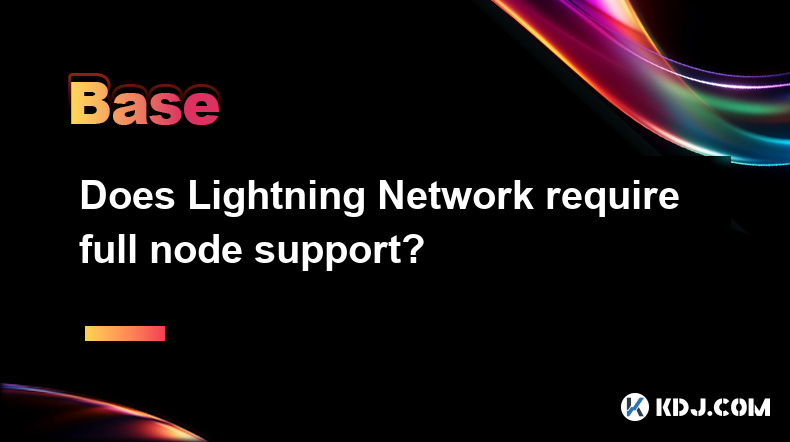
Key Points:
- The Lightning Network (LN) does not require users to run a full Bitcoin node. This is a key advantage of its design.
- LN uses a network of payment channels established between participants, significantly reducing reliance on the main Bitcoin blockchain.
- While running a full node offers certain benefits, it’s not mandatory for using or benefiting from the Lightning Network.
- Several lightweight clients and wallets allow participation in LN without the complexities of node operation.
- Understanding the differences between full nodes and LN's architecture is crucial for navigating the network effectively.
Does Lightning Network require full node support? The answer is nuanced. While the Lightning Network operates on top of the Bitcoin blockchain, it doesn't necessitate that every user runs a full Bitcoin node. This is a critical distinction. A full node downloads and verifies the entire Bitcoin blockchain, demanding substantial storage space and bandwidth. The Lightning Network, designed to alleviate Bitcoin's scalability issues, cleverly circumvents this requirement for most users.
Instead of relying on the main blockchain for every transaction, LN employs a system of payment channels. These channels are essentially two-way contracts between participants, allowing for near-instantaneous and low-fee transactions off-chain. These transactions are only settled on the Bitcoin blockchain periodically, greatly improving efficiency.
So, how does this relate to full node support? The core Bitcoin network, which underpins the Lightning Network, needs full nodes for its operation and security. These nodes verify transactions and maintain the integrity of the blockchain. However, individuals using the Lightning Network for payments don't need to run one themselves. Their transactions are largely handled within the established payment channels.
This is a significant advantage for average users. Running a full node is technically demanding, requiring considerable technical expertise and resources. The Lightning Network's design makes it accessible to a much broader user base by removing this barrier to entry. Various lightweight wallets and clients provide seamless access to the Lightning Network without the need for managing a full node.
Many popular Lightning Network wallets, such as BlueWallet, Breez, and Phoenix, handle the complexities of the underlying technology for you. These wallets connect to the LN network and allow users to send and receive payments without needing to understand the intricate details of how the system works or manage a full node.
However, running a full Bitcoin node alongside your Lightning Network wallet does offer certain benefits. For example, it increases your security by allowing you to independently verify the integrity of the Bitcoin blockchain and your transactions. Furthermore, it contributes to the decentralization and robustness of the overall Bitcoin ecosystem.
But for the vast majority of users who simply want to use the Lightning Network for fast and cheap payments, running a full node is not necessary or practical. The simplified user experience offered by lightweight wallets and clients makes the Lightning Network accessible to a far wider audience, which is a key aspect of its success. The network's design prioritizes ease of use without sacrificing security.
Let's explore the implications further. Imagine trying to use Bitcoin directly for everyday micro-transactions. The fees and confirmation times would be prohibitive. The Lightning Network solves this by creating a layer on top of Bitcoin, enabling faster and cheaper payments. This layer doesn't require every user to be a full node operator.
This decentralized nature of the Lightning Network is a crucial aspect of its design. No single entity controls the network; instead, it relies on the participation of many individuals. While running a full node enhances network security and decentralization, it's not a requirement for participating in the benefits of the Lightning Network.
The development of user-friendly wallets and clients that abstract away the complexities of node operation is essential to the widespread adoption of the Lightning Network. These tools make it possible for anyone, regardless of their technical skills, to enjoy the advantages of faster and cheaper Bitcoin transactions.
The focus on accessibility is a key differentiator for the Lightning Network. It allows the benefits of Bitcoin's security and decentralization to be experienced by a much larger group of users, without requiring them to grapple with the technical hurdles of managing a full node.
This inherent flexibility is a powerful aspect of the Lightning Network's design. It allows for both technical users who want to run full nodes and less technically inclined users who prefer the ease of use provided by lightweight clients to participate in the network. This inclusive approach contributes to its robustness and scalability.
Frequently Asked Questions:
Q: Is running a full node beneficial for Lightning Network users?
A: While not mandatory, running a full node enhances security and contributes to the network's decentralization. However, it's not a requirement for using the Lightning Network.
Q: Can I use the Lightning Network without any technical knowledge?
A: Yes, numerous user-friendly wallets and clients abstract away the technical complexities, allowing for easy participation without needing to run a full node or understand its intricacies.
Q: How does the Lightning Network improve on Bitcoin's limitations?
A: The Lightning Network addresses Bitcoin's scalability issues by enabling faster and cheaper transactions off-chain, reducing the load on the main Bitcoin blockchain. This allows for micro-transactions and more efficient payments.
Q: What are the security implications of not running a full node on the Lightning Network?
A: Not running a full node reduces your personal control over verifying the integrity of the Bitcoin blockchain. However, reputable Lightning Network wallets employ robust security measures to mitigate risks. The security of your funds largely depends on the security of the wallet you choose.
Disclaimer:info@kdj.com
The information provided is not trading advice. kdj.com does not assume any responsibility for any investments made based on the information provided in this article. Cryptocurrencies are highly volatile and it is highly recommended that you invest with caution after thorough research!
If you believe that the content used on this website infringes your copyright, please contact us immediately (info@kdj.com) and we will delete it promptly.
- Bitcoin (BTC) price falls four per cent after Donald Trump imposes tariffs on trading partners worldwide
- 2025-04-03 14:25:13
- Ethereum Price Fails to Maintain Gains
- 2025-04-03 14:25:13
- Justin Sun, Founder of Tron, Steps in to Rescue TrueUSD (TUSD) from a $456M Reserve Crisis
- 2025-04-03 14:20:12
- Meme Coins Are Exploding, Here's Why They're So Appealing
- 2025-04-03 14:20:12
- Qubetics ($TICS): The Best 100x Crypto for Real Utility and ROI
- 2025-04-03 14:15:12
- Ethereum Faces Tough Market Conditions
- 2025-04-03 14:15:12
Related knowledge
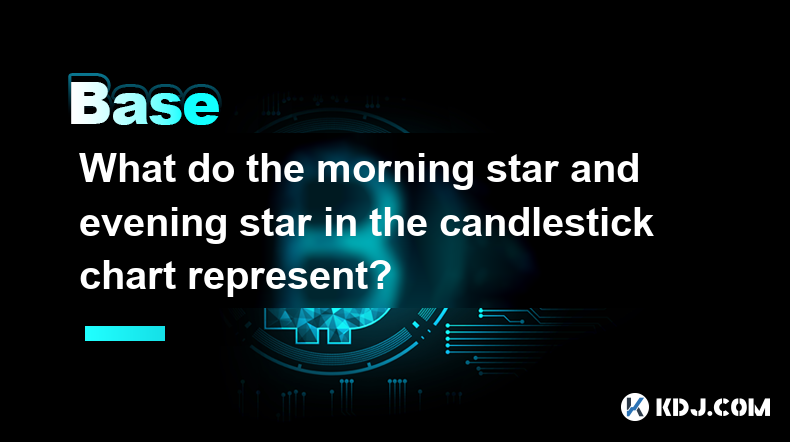
What do the morning and dusk stars in the candlestick chart represent?
Apr 03,2025 at 03:11pm
In cryptocurrency trading, the K-line chart is an important tool for analyzing market trends and price movements. Among them, 'Morning Star' and 'Evening Star' are two important reversal patterns, which represent the key signals of the market's shift from a bear market to a bull market and from a bull market to a bear market, respect...
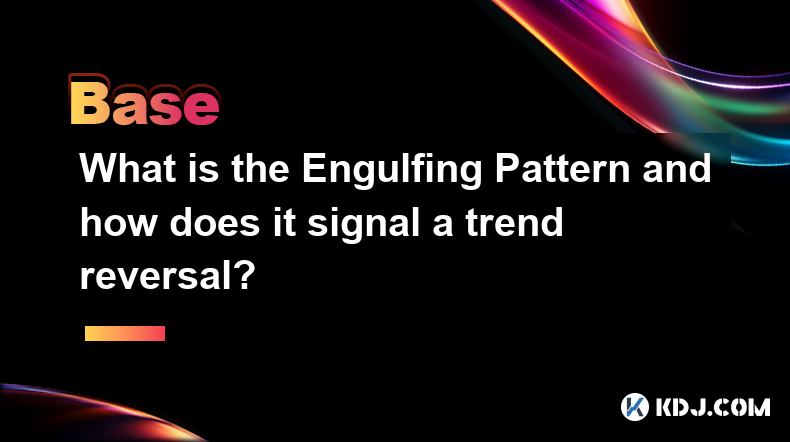
What is the swallowing form? How does it predict a trend reversal?
Apr 03,2025 at 03:07pm
In cryptocurrency trading, technical analysis is one of the important tools traders use to predict market trends and make trading decisions. Among them, the Engulfing Pattern is a common K-line pattern. When it appears on the chart, it is usually considered a signal of a trend reversal. This article will explore in detail what the engulfing pattern is a...
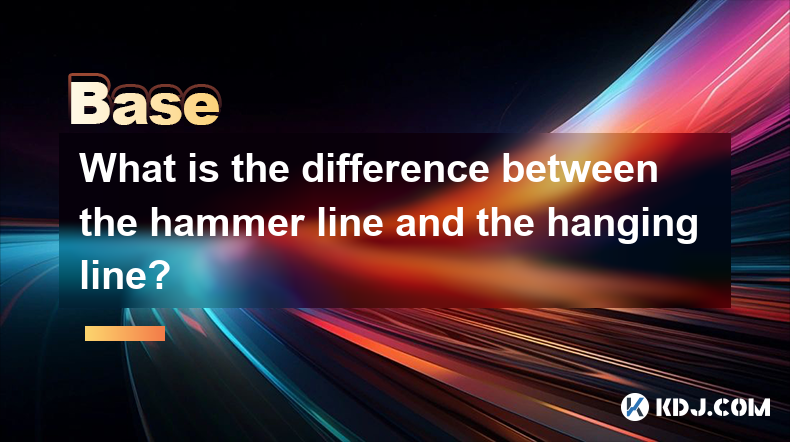
What is the difference between the hammer line and the hanging line?
Apr 03,2025 at 03:03pm
The hammer line and the 'hanging line' pattern are common K-line patterns in technical analysis. They are very similar in appearance, but there are significant differences in the market environment and the predicted market trend. This article will explore the differences between these two forms in detail and help readers better understand and use them f...
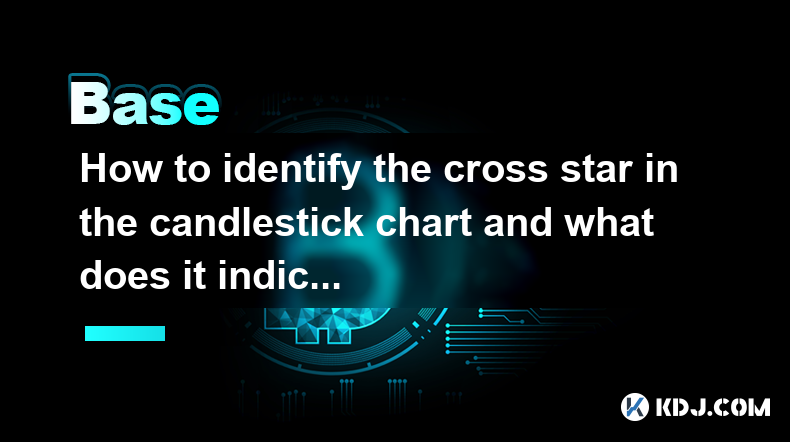
How to identify the cross star in the candle chart and what does it mean?
Apr 03,2025 at 02:57pm
In cryptocurrency trading, the K-line chart is one of the important tools to analyze market trends and price movements. Among them, 'Cross Star' is a common K-line pattern, which is of great significance in analyzing market sentiment and predicting price trends. This article will introduce in detail how to identify the 'cross star' in th...
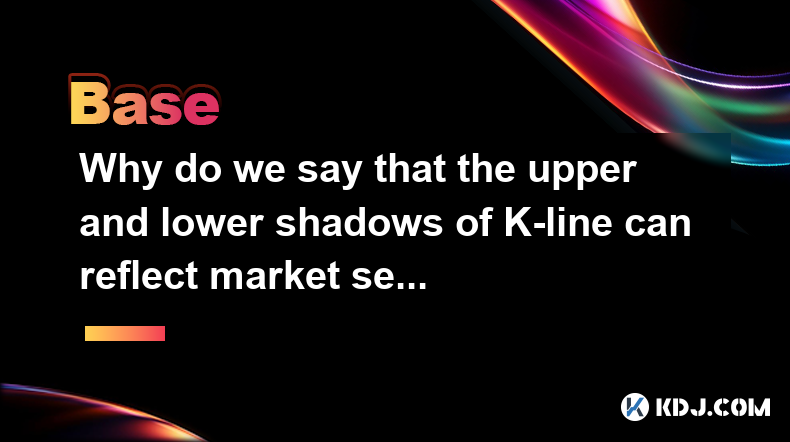
Why do the upper and lower shadows of the K-line reflect market sentiment?
Apr 03,2025 at 02:53pm
The K-line chart is one of the most commonly used tools in technical analysis, and the upper and lower shadows can intuitively reflect the market's long and short emotions and the psychological state of traders. By carefully observing and analyzing the upper and lower shadows of the K-line, investors can better understand market dynamics and make sm...

What are positive and negative lines? What is the difference between them?
Apr 03,2025 at 02:47pm
In the cryptocurrency market, the K-line chart is a commonly used technical analysis tool to show price changes. Each 'candle' in the K-line chart represents the price trend over a period of time, among which 'yang line' and 'yin line' are two key concepts. Understanding them is essential to analyzing market trends and making trading decisions. What is ...

What do the morning and dusk stars in the candlestick chart represent?
Apr 03,2025 at 03:11pm
In cryptocurrency trading, the K-line chart is an important tool for analyzing market trends and price movements. Among them, 'Morning Star' and 'Evening Star' are two important reversal patterns, which represent the key signals of the market's shift from a bear market to a bull market and from a bull market to a bear market, respect...

What is the swallowing form? How does it predict a trend reversal?
Apr 03,2025 at 03:07pm
In cryptocurrency trading, technical analysis is one of the important tools traders use to predict market trends and make trading decisions. Among them, the Engulfing Pattern is a common K-line pattern. When it appears on the chart, it is usually considered a signal of a trend reversal. This article will explore in detail what the engulfing pattern is a...

What is the difference between the hammer line and the hanging line?
Apr 03,2025 at 03:03pm
The hammer line and the 'hanging line' pattern are common K-line patterns in technical analysis. They are very similar in appearance, but there are significant differences in the market environment and the predicted market trend. This article will explore the differences between these two forms in detail and help readers better understand and use them f...

How to identify the cross star in the candle chart and what does it mean?
Apr 03,2025 at 02:57pm
In cryptocurrency trading, the K-line chart is one of the important tools to analyze market trends and price movements. Among them, 'Cross Star' is a common K-line pattern, which is of great significance in analyzing market sentiment and predicting price trends. This article will introduce in detail how to identify the 'cross star' in th...

Why do the upper and lower shadows of the K-line reflect market sentiment?
Apr 03,2025 at 02:53pm
The K-line chart is one of the most commonly used tools in technical analysis, and the upper and lower shadows can intuitively reflect the market's long and short emotions and the psychological state of traders. By carefully observing and analyzing the upper and lower shadows of the K-line, investors can better understand market dynamics and make sm...

What are positive and negative lines? What is the difference between them?
Apr 03,2025 at 02:47pm
In the cryptocurrency market, the K-line chart is a commonly used technical analysis tool to show price changes. Each 'candle' in the K-line chart represents the price trend over a period of time, among which 'yang line' and 'yin line' are two key concepts. Understanding them is essential to analyzing market trends and making trading decisions. What is ...
See all articles























































































